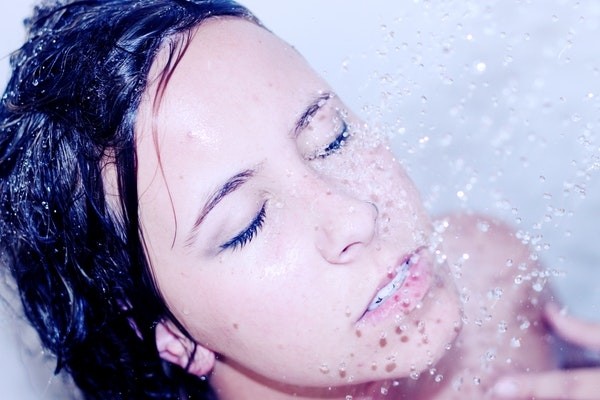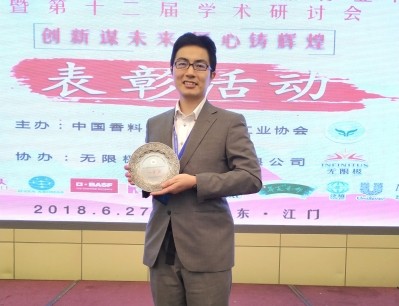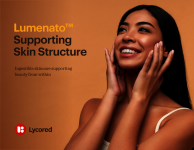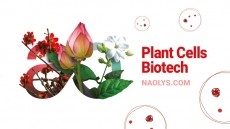Exclusive interview
Niacinamide and the ‘Fountain of Youth’

The skin benefits associated with niacinamide have long been acknowledged by P&G scientists, and the active ingredient has also played a crucial role in Olay’s new Total Effect Age-Defying Moisturiser SPF 30.
1. What inspired Professor Mark-Birch Machin and Dr John Oblong to research niacinamide?
For over 20 years we at P&G have been researching the effects of niacinamide on skin biology. More recently we had found that niacinamide plays an important role in skin metabolism and bioenergetics, both of which are negatively impacted by exposure to both external and internal stressors such as UV and excessive cortisol.
Prof Mark Birch-Machin is a world-renowned scientist whose lab studies changes in mitochondrial function in human health and disease. We have been collaborating with Prof Birch-Machin for nearly ten years on the role of mitochondrial function in skin biology and our more recent work has furthered our understanding on how niacinamide can restore mitochondrial function in aged skin cells such as fibroblasts.
2. What impact has niacinamide had on skin care products and innovation to date?
P&G has been using niacinamide in skin products since 2000 when it was first introduced in Total Effects from Olay. Because of the wide range of skin benefits that niacinamide can affect, it is currently a key ingredient found in nearly all of P&G skin care product offerings.
3. How does niacinamide increase mitochondrial function in cells?
Our current hypothesis is that niacinamide helps drive mitophagy, a specialised form of autophagy, which essentially removes damaged mitochondria components and salvages residual functioning components.
This leads to an increase in both quality and quantity of more optimised mitochondria. While we see these effects particularly on aged cells, there is also a positive effect on cells from younger aged donors. This suggests a protective effect which could be a means to pre-empt the ageing process.
4. What is the impact of oxidative stress on the skin?
Much like in other tissues in the body, oxidative stress plays a significant role in ageing of the skin. Elevated oxidative stress is a key component along with inflammation that leads to what is referred to as inflammaging. Longer term this leads to senescence and overall decreased functionality of the skin.
Oxidative stress can be recorded in mitochondria by an accumulation of deletions and mutations in mtDNA. Since mtDNA cannot repair as effectively as nuclear DNA, this accumulation can be viewed as a memory recording of the history of exposure to oxidative stress conditions induced by such stressors as UV and excessive cortisol.
5. Are consumers concerned about this (particularly in APAC)?
Most consumers are aware that environmental insults such as UV, pollution, ozone can cause damage to their skin. Since these stressors can cause significant spikes in oxidative stress, there is a clear connection between these concerns.
6. What impact do the researchers hope this will have on the skin care industry (APAC and globally)?
In addition to using a good sunscreen and limiting your time in the sun, niacinamide has been proven to have profound effects on protecting the skin from damaging rays and other stressors.
There are even clinical trials that found both topical and oral usage of niacinamide can reduce the incidence of actinic keratosis, precursors to skin carcinomas. So this has broader health implications as well.
7. How will P&G be utilising these research findings in its product development?
While niacinamide is already in most of P&G's skin care product line-up, these learnings are fuelling our research to discover new technologies that work in combination with niacinamide.
Research comments on Niacinamide
Additionally, these mechanistic learnings continue to reinforce the importance of using niacinamide in your facial skin care regimen, both from a beauty as well as a health perspective.
“The loss of tissue-specific stem cells is proposed as a general phenomenon occurring during chronological ageing. This could be particularly detrimental to skin that relies on epidermal stem cells to be constantly renewed,” shared Dr Sophie Bellanger, Principal Investigator, IMB.
“As well as playing an important role in skin care, niacinamide is also being heralded for its ability to promote longevity in general through increasing levels of NAD which are responsible for boosting energy,” expressed Dr John Oblong, Principal Scientist at P&G.
“Hence why researchers in the field are suggesting NAD is the closest we have gotten to the Fountain of Youth.”







![Latest developments from the South Korean beauty market. [Getty Images]](/var/wrbm_gb_food_pharma/storage/images/_aliases/wrbm_tiny/publications/cosmetics/cosmeticsdesign-asia.com/headlines/brand-innovation/korea-focus-able-c-c-kolmar-and-more-in-this-k-beauty-round-up/17357973-1-eng-GB/Korea-focus-Able-C-C-Kolmar-and-more-in-this-K-beauty-round-up.jpg)

![Able C&C has furthered its partnership with Japanese discount chain Daiso with new makeup launch. [A'pieu]](/var/wrbm_gb_food_pharma/storage/images/_aliases/wrbm_tiny/publications/cosmetics/cosmeticsdesign-asia.com/headlines/brand-innovation/a-pieu-and-daiso-launch-exclusive-2-makeup-line/17339117-1-eng-GB/A-pieu-and-Daiso-launch-exclusive-2-makeup-line.jpg)
![Down Under Enterprises is setting sights on the Asian market as environmental sustainability and traceability become increasingly important. [Getty Images]](/var/wrbm_gb_food_pharma/storage/images/_aliases/wrbm_tiny/publications/cosmetics/cosmeticsdesign-asia.com/headlines/market-trends/down-under-enterprises-shifts-focus-to-china-as-environmental-sustainability-traceability-come-into-the-spotlight/17304932-1-eng-GB/Down-Under-Enterprises-shifts-focus-to-China-as-environmental-sustainability-traceability-come-into-the-spotlight.jpg)
![News updates from Shiseido, Dr.Ci:Labo, Sephora, and more. [Shiseido]](/var/wrbm_gb_food_pharma/storage/images/_aliases/wrbm_tiny/publications/cosmetics/cosmeticsdesign-asia.com/headlines/brand-innovation/updates-from-shiseido-dr.ci-labo-sephora-and-more/17334944-1-eng-GB/Updates-from-Shiseido-Dr.Ci-Labo-Sephora-and-more.jpg)

![Clariant has underscored the importance of localisation strategies and distribution capabilities in China with beauty trends evolving at a rapid pace. [Getty Images]](/var/wrbm_gb_food_pharma/storage/images/_aliases/wrbm_tiny/publications/cosmetics/cosmeticsdesign-asia.com/article/2024/04/16/clariant-emphasises-importance-of-localisation-in-the-era-of-viral-trends/17327969-1-eng-GB/Clariant-emphasises-importance-of-localisation-in-the-era-of-viral-trends.jpg)



